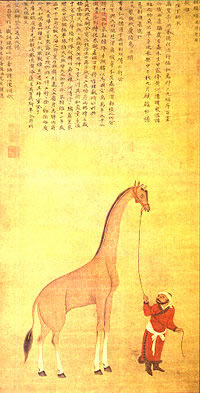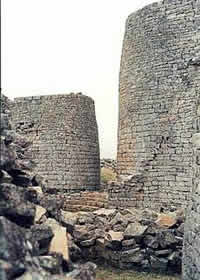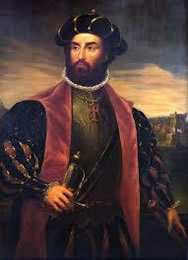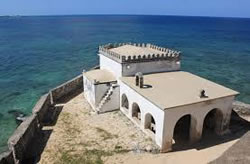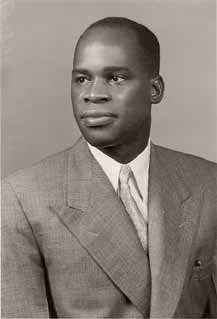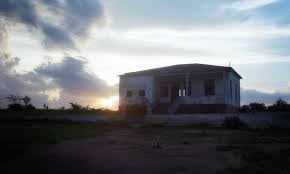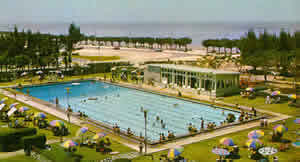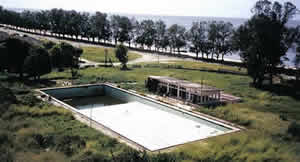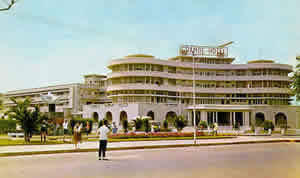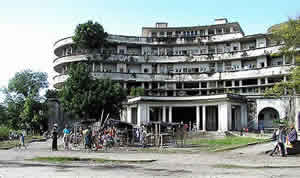THE HISTORY OF MOZAMBIQUE
including the History of Delagoa Bay, History of Lourenco Marques, Portuguese Colony history, Maputo history, Ronga history and Mozambique trade
Compiled by Louis-John Havemann
HISTORY
For an interesting article on further research about IRON AGE INHABITANTS IN THE ZAMBESI RIVER BASIN see this presentation by
They then gradually spread into the plateau and coastal areas of South Eastern Africa.
|
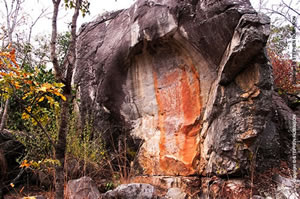 |
||||||
This migration was mainly confined to the east of the 600mm rainfall line and they were farmers and herders as well being of the iron age, using metal tools and implements.Today most of Mozambique's indigenous peoples are of this Nguni origin, and the tribal character of the people that developed in this region was largely influenced and governed by geography. The Chopi, Tonga, and Tsonga were grouped in to chiefdoms in the southern regions. Around the Zambezi River, in the central region, lived, the Barue, Maravi, Macua-Lomue, Shona, as well as some Tonga . These Nguni groups were not homogenous, as one would be led to believe. The Maravi, comprised of a number of small scattered kingdoms. The Macua-Lomue were gathered into clans ruled by chiefs. Mozambique had an established Arab presence by the 10th century (923 AD) evidenced by the first written record of Mozambique by an Arab writer, Al-Mas'udi, when he mentioned the town of Sofala, - 45 km south of Beira. His report mentions the Wak Wak people who used iron.
An Arab Boat that is similar to those used in the voyage that brought Arab merchants to Sufalah, modern Mozambique, in 923.
Mozambique was in fact named after the Arab sheik on Mozambique Island called "Musa Bin Biki" when Vasco de Gama first landed there in 1498. |
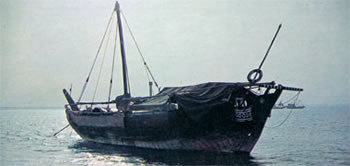 |
||||||
Coastal trade was at first dominated by Arabs and Persians, who had established settlements as far south as MOZAMBIQUE ISLAND. |
|||||||
Trading between the Native and the Arabs: The Indian Ocean has a great advantage benefiting trade routes, in the form of the Monsoon Winds.
During the summer months the Monsoon winds
blow north and during the the winter months they blow south.
For several centuries, Arab commercial and slave trading (Black Gold) had existed along the coast and outlying islands. The Arabs traded mainly, ceramic pottery, cloth, glass, beads, salt and metal goods with these Bantu-speaking people, in exchange for gold, palm oil, rhino horn, amber, hides & skins and ivory. With the cooperation of the African chiefs, this trade expanded. supplied by goods from the kingdoms in the interior hinterland. In time intermarriage between these two groups gave rise to the Swahili culture which is still dominant in the Eastern African coastal areas down to northern Mozambique.
The Arab trade in Africa extended as far south as Mozambique, probably Sofala, which was at the southern limit of the winter Monsoon winds. For several centuries, Arab commercial and slave trading had existed along the coast and outlying islands. The Arabs traded mainly, ceramic pottery, cloth, glass, beads, salt and metal goods with these Bantu-speaking people, in exchange for gold, palm oil, rhino horn, amber, hides & skins and ivory. With the cooperation of the African chiefs, this trade expanded. supplied by goods from the kingdoms in the interior hinterland. In time intermarriage between these two groups gave rise to the Swahili culture which is still dominant in the Eastern African coastal areas down to northern Mozambique. One of the oldest and most southerly of these trading groups, was a settlement called Mapungubwe. It is thought to have started during the 10th century in the upper reaches of the Limpopo River, based on groups of villages under a chief, known as the "Nyika system". It is the earliest known settlement featuring stone enclosures, or "Zimbabwes".
|
|||||||
|
|||||||
|
|||||||
|
|||||||
In 1505 the Portuguese occupied Sofala, establishing a fort and installing a friendly Arab ruler there. Portugal became the dominant trading power of the East Coast of Africa, by conquering the Arab trading settlements and it monopolised the Indian Ocean trading routes for two centuries until they were defeated by the Omani Arabs at the end of the 17th century.
The first Portuguese fort built in Mozambique was at Sofala to protect their gold trade route. A settlement was also built at Quelimane north of the Zambesi River. The Zambesi River became the main trade route with forts and trading posts at Tete and Sena on the banks of the river, trading for gold ivory and slaves (Black Gold) in exchange for European trade goods, like beads and tools and cloths. In the 1600s Portuguese traders and retired soldiers seized large areas of land in the Zambesi Valley and established what was known as Prazos or agricultural estates, using slave labour or forced local communities to supply workers. These "Prazeros" as they were known became very wealthy and dominated the area as independent powers for 300 years. The Prazos were stopped in the early 1900s. Mozambique, formally known as Portuguese East Africa, became a Portuguese colony in 1505, later to become an overseas province of Portugal in 1951.
Mozambique Island The Portuguese made Mozambique Island their headquarters until they changed it in 1897 to Delagoa Bay, which became Lourenco Marques and now Maputo. The beautiful Portuguese colonial architecture is a legacy of the Portuguese who colonised the country for nearly 500 years. Mozambique Island was the main starting point for trade with the Mozambican hinterland and was the capital until this was moved to Lourenco Marques, now Maputo in 1897. |
|||||||
|
|||||||
Mozambique under Portuguese rule At the beginning of the 16th century the Portuguese tried to advance into the interior of Mozambique, but were not numerically nor militarily strong enough to be successful in their endeavors. The occupation of the lower Zambezi and the two garrisons and trading posts of Sena and Tete contributed little towards control of the country. In spite of the Portuguese presence along the Zambezi, there were powerful chiefs, such as the, Karonga, Undi, Chipeta, Maravin and Nyassa who had established a strong and powerful prescence in the region north of the Zambezi River. South of the Zambezi River, trade, was under the control of the Shona people. Portuguese power declined during the period when the crown of Portugal was combined with the crown of Spain (1580-1640). The Portuguese African coastal settlements were ignored and fell into poorly maintained condition. This resulted in investment lagging while Lisbon devoted itself to the more lucrative trade with India and the Far East as well as the colonisation of Brazil. At the Berlin Conference in 1884, Mozambique became a Portuguese colony,this resulted in a system of dividing the land into prazos (large agricultural estates)was established. This system resulted in land being rented to British and French companies, which set up plantations growing cash crops such as cotton, and tea. The result was that the natives cultivatied the land for the benefit of the European leaseholders, (Prazeros) who were also tax-collectors for each district and claimed the tax either in labour or produce. This system kept the sharecropping farmers in a state of serfdom.
Conflicts for independence from the Portuguese: In 1917 there was a Shona rebellion and this became Mozambique's first major anti-colonial uprising.Many of the Portuguese
After World War II, many European nations were granting independence to their colonies. Portugal however established Mozambique, Guinea-Bissau and Angola as Portuguese overseas provinces of the mother country, and emigration to the colonies soared. Mozambique's Portuguese population at the time of independence was about 250,000. "Indigenas", who were indigenous Mozambique citizens, could by certain provisions being fulfilled, become an "Assimilado". This meant that they could become a Colonial African Portuguese citizen. One of the main conditions to be met was proper education. Educational opportunities in Mozambique were limited and few and far between so there were not many "Indigenas" who became "Assimilados". Neither Colonial African Portuguese citizens "Assimilados"nor Indigenous Mozambicans "Indigenas" had political rights, although Colonial African Portuguese citizens were in a privileged class of their own. The aspirations of the Black Mozambicans to rule themselves without having to become "Black Europeans" was not met, causing increasing dissatisfaction amongst them. |
|||||||
|
|||||||
|
|||||||
Ongoing guerilla wars began sapping Portugal's ability to maintain these costly wars. Following the 25 April 1974 coup in Lisbon, President Caetano fled to Brazil and a military junta under Gen. Antonio de Spinola became the government and Portuguese colonialism collapsed. This resulted in a peace agreement in Mozambique on 7 September 1974 and the installation of a provisional government. Frelimo's Joaquim Chissano, was installed as prime minister of Mozambique. Racial clashes occurred and resulted in a mass exodus of White Portuguese citizens contributing to a major collapse of the economic infrastructure of Mozambique.
These following photos below illustrate how badly the infrustructure of Mozambique collapsed under the Communist regime of Samora Machel.
Ongoing guerilla wars began sapping Portugal's ability to maintain these costly wars. Following the 25 April 1974 coup in Lisbon, President Caetano fled to Brazil and a military junta under Gen. Antonio de Spinola became the government and Portuguese colonialism collapsed. This resulted in a peace agreement in Mozambique on 7 September 1974 and the installation of a provisional government. Frelimo's Joaquim Chissano, was installed as prime minister of Mozambique. Racial clashes occurred and resulted in a mass exodus of White Portuguese citizens contributing to a major collapse of the economic infrastructure of Mozambique.
These following photos below illustrate how badly the infrustructure of Mozambique collapsed under the Communist regime of Samora Machel. |
|||||||
|
|||||||

